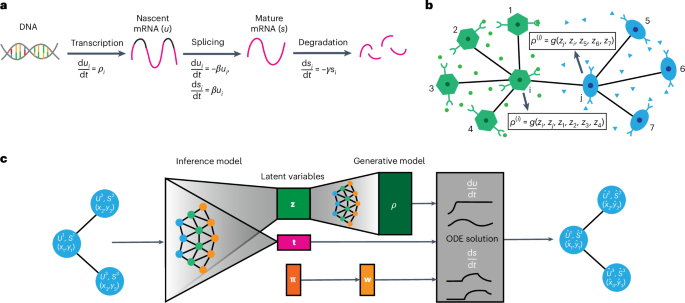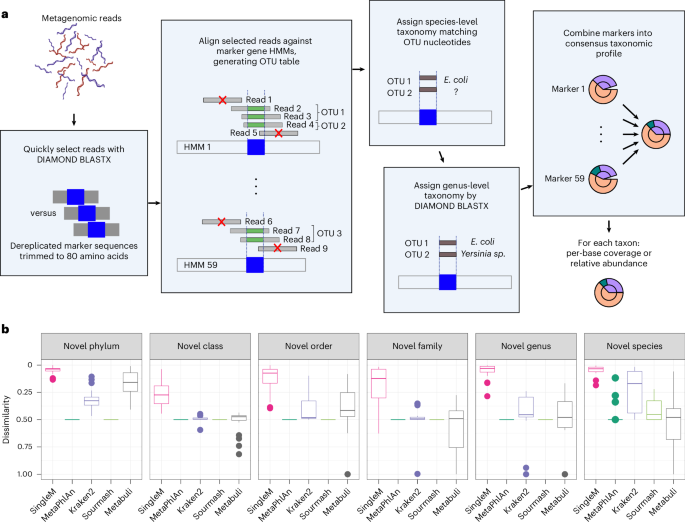Now Reading: Mapping Cellular Motion Through Spatial Transcriptomics
-
01
Mapping Cellular Motion Through Spatial Transcriptomics
Mapping Cellular Motion Through Spatial Transcriptomics

Swift Summary:
- The provided text is a list of scientific references related to stem cell niches,cell migration,transcriptomics,and spatial genomics across various studies.
- The citations include works from journals such as Nature Biotechnology, Science, and Neuron spanning diverse research topics like tissues regeneration mechanisms, cerebral cortex development, gene expression analysis in melanoma and pancreatic cancers.
- Each reference is directly connected to external platforms including PubMed, PubMed Central, CAS references, and Google Scholar for further access.
Indian Opinion Analysis:
The citations listed suggest significant advancements in biological research fields such as stem cell niche modulation and spatial transcriptomics. While these studies may appear disconnected from immediate Indian priorities or policies at first glance, their implications extend broadly. India has a burgeoning biotech sector that could leverage insights from this body of work-as a notable example-in developing cutting-edge medical treatments or strengthening its genomic research capabilities.Given India’s growing investments in science education and innovation hubs nationwide like Bengaluru’s biotech ecosystem, fostering international collaborations cited here may accelerate domestic breakthroughs. Neutral dissemination of such knowledge aligns with India’s broader aim to integrate global scientific advances into its developmental framework.
Read more here.Quick Summary:
- The raw data includes references to scientific advancements in RNA profiling, single-cell analysis, and cellular trajectory mapping.
- Research papers and developments involve spatially resolved techniques, three-dimensional tissue sequencing, high-resolution tumor habitat mapping, diffusion pseudotime modeling, deep learning applications for RNA velocity analysis, and optimal transport methods for single-cell gene expression.
- Findings are published across global scientific journals like Science, Nature, Cell, and others; significant contributions by authors worldwide are noted.
Indian Opinion Analysis:
India’s research landscape in biotechnology and genetic analysis can greatly benefit from advancements outlined in the references provided. Single-cell trajectory inference as well as RNA profiling could accelerate India’s efforts to innovate diagnosis or treatments for complex diseases such as cancer or genetic disorders. Scientific collaboration with international institutions may enhance India’s capabilities in bioinformatics-driven discoveries while fostering its ambitions of becoming a leader in genomics research. Developing technical expertise locally will likely cultivate innovation frameworks crucial to healthcare challenges.
Read more: LinkQuick summary:
- The text primarily references multiple scientific journals and articles related to developmental biology, focusing on cellular mechanisms, embryonic development, and gene expression studies.
- Topics covered include neuronal diversity in the cerebral cortex, intestinal development, thymus function, liver organogenesis from murine stem cells, RNA sequencing technology advancements, embryoid body mechanics for genomic research across species and cell types.
- Studies analyzed range from understanding mammalian tissue differentiation to advancements in single-cell transcriptomics technologies.
- Indian connections are sparse or not directly mentioned within the provided text.
Indian opinion Analysis:
The referenced material emphasizes advances in scientific discovery around cellular development and biological processes that hold promise for medical technology evolution globally. For India specifically-which is highly invested in advancing biotech industries-such developments can serve as models or collaborative opportunities with international research institutions. The insights from these studies could further India’s ambitions to lead precision medicine efforts within its rapidly growing healthcare sector while also strengthening global academic partnerships.
For read more visit: cmd=Retrieve&db=PubMed&dopt=abstract&list_uids
Quick Summary
- Researchers and contributors listed the latest developments in single-cell RNA analysis through spatial transcriptomics and computational methods.
- References indicate advancements such as RNA velocity modeling, multi-omics integration for precise cell fate prediction, and scalable python packages (e.g., scFates) for pseudotime analysis.
- Tools like graph convolutional networks, variational autoencoders, and datasets offer solutions to improve understanding of cellular behaviors in embryonic differentiation.
- Resources referenced include publications from Nature biotechnology, stem Cells, and open-source platforms like GitHub for tools such as TopoVelo.
Indian opinion Analysis
India’s burgeoning biomedical research sector may find opportunities in these cutting-edge methodologies. Integration of single-cell spatial transcriptomics or advanced algorithms could assist Indian researchers working on stem cells or embryonic studies to better understand human health complexities. Moreover, with global calls for collaboration in data sharing-such as repositories highlighted here-Indian institutions could enhance their contributions by adopting similar frameworks. Strengthening India’s expertise in computational biology seems timely alongside such international progress.

























